About the Editors
Editors-in-Chief
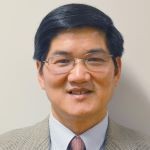 Long-Qing Chen, PhD
Long-Qing Chen, PhD
Distinguished Professor of Materials Science and Engineering
Pennsylvania State University
PA, USA
Prof. Chen's research focuses on applying computer simulations to understand the thermodynamics and kinetics of phase transformations and mesoscale microstructure evolution. He has developed and applied phase-field models to a range of materials and processes, including ferroelectric phase transitions and ferroic domain structure development, electrode microstructure in solid oxide fuel cells and batteries, microstructure development in additively manufactured materials and growth of two-dimensional materials. Professor Chen graduated from Zhejiang University, followed by postgraduate studies at Stony Brook University and Massachusetts Institute of Technology.
 Lidong Chen, PhD
Lidong Chen, PhD
Prof. of Materials Science
Shanghai Institute of Ceramics, CAS
Shanghai, China
Prof. Chen previously served as Chief Engineer at Riken Corporation and at the Japan National Aerospace Laboratory. He then worked at the Institute for Materials Research, Tohoku University, as Research Associate and Associate Professor. He joined Shanghai Institute of Ceramics, Chinese Academy of Sciences (SICCAS) as a Professor in 2001, under the 'Hundreds Talent Project' from Chinese Academy of Sciences. Currently he is the Director of the State Key Lab of High Performance Ceramics and Superfine Microstructures, and served as Deputy President of SICCAS from 2004 to 2013. Prof. Chen's research focuses on inorganic materials and composites.
Deputy Editors
 Keith T Butler, PhD
Keith T Butler, PhD
Associate Professor
University College London
London, UK
Keith Butler is associate professor for materials theory and simulation at University College London, with a strong interest in the application of machine learning for materials characterization and discovery. Dr Butler’s research group focusses on developing and applying new machine learning methods for analysing materials data and developing workflows for functional materials design. Recently his research has focussed on several aspects of machine learning for materials science, including interpretable machine leaning, generative models, physics informed machine learning and uncertainty quantification. Dr. Butler leads/contributes to several open source packages for machine learning in materials science and is a keen advocate of open, reproducible software.
Managing Editor
 Ronghua Guo, PhD
Ronghua Guo, PhD
Ronghua obtained her PhD degree in Geology from Nanjing University in 2021. During her PhD, she focused on the sedimentary provenance analysis with different detrital heavy minerals from modern river sands in the South Tibetan Plateau. She joined Springer Nature as an Editorial Submission Advisor in October 2021 and now serves as a Managing Editor for 4 titles in the npj Series. She is now based in the Springer Nature Nanjing office.
Associate Editors
 Joshua Carl Agar, PhD
Joshua Carl Agar, PhD
Professor
Department of Mechanical Engineering and Mechanics
Philadelphia, PA, USA
Joshua C. Agar is an Assistant Professor in the Department of Mechanical Engineering and Mechanics at Drexel University. His research interests center around codesign of experimental synthesis and spectroscopy, machine learning, and heterogeneous computing to understand and control multifunctional materials. Joshua earned a Ph.D. in Materials Science and Engineering from the University of Illinois at Urbana Champaign and was a postdoctoral fellow at the University of California-Berkeley.
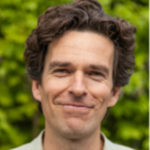 Gabriel Bester, PhD
Gabriel Bester, PhD
Departments of Chemistry and Physics
University of Hamburg,Germany
Gabriel Bester is a theoretical physicist and a full professor at the University of Hamburg. He earned his Ph.D. at the Max-Planck-Institute for Metals Research, specializing in the quantification of bond energies. Subsequently, he spent seven years at the National Renewable Energy Lab (NREL) as a senior scientist in the group of Alex Zunger. He led an independent research group at the Max-Planck Institute for Solid State Research between 2007 and 2014 before joining the University of Hamburg. His research interests include the development of numerical methods for nanoscopic systems with a focus on excited state properties.
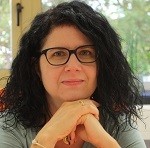
Professor, Faculty of Physics and Astronomy Research Center Future Energy Materials and Systems of the University Alliance Ruhr ICAMS Ruhr University Bochum Bochum, Germany
After receiving her PhD in Physics in 2002 from the University of Pavia, Italy, Silvana Botti was Marie-Curie Fellow at the Ecole Polytechnique, Paris-Saclay University, where she was appointed CNRS Research Scientist in 2004. In 2008 she moved to the University of Lyon and in 2014 to the Friedrich-Schiller University Jena. She has joined in 2023 the newly established Research Center of Future Energy Materials and Systems in Bochum. Her research activities focus on computational materials design, as well as on the development and application of many-body treatments for theoretical spectroscopy.
 Kamal Choudhary, PhD
Kamal Choudhary, PhD
Research Scientist, Material Measurement Laboratory
National Institute of Standards and Technology
MD, USA
Kamal Choudhary is a research scientist in the Materials measurement laboratory at the National Institute of Standards and Technology (NIST), Maryland, USA and Theiss Research, La Jolla, CA, USA. He received his PhD from University of Florida in 2015 and then joined NIST. His research interests are focused on atomistic materials design using classical, quantum, and machine learning methods. In particular, he has developed the JARVIS database and tools (https://jarvis.nist.gov/) that hosts publicly available datasets for millions of material properties. He has published more than 50 research articles in various reputed journals and is an active member of TMS, APS, and MRS societies.
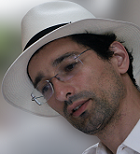 Gábor Csányi, PhD
Gábor Csányi, PhD
Prof. Molecular Modelling, Dept. of Engineering Laboratory
University of Cambridge
Cambridge, United Kingdom
Prof.Csányi's expertise is in atomistic simulation, particularly in multi scale modelling that couples quantum mechanics to larger length scales. He is currently engaged in applying machine learning techniques to materials modelling problems e.g. deriving force fields (interatomic potentials) from ab initio data. Prof. Csanyi's interests include statistical problems in molecular dynamics, e.g. in enhanced sampling algorithms that can be used explore the atomistic configuration space of materials and molecules.
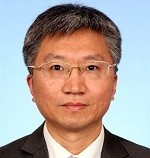 Chun-Gang Duan PhD
Chun-Gang Duan PhD
Prof., Director Key Laboratory of Polar Materials and Devices
East China Normal University
Shanghai, China
Prof. Chun-Gang Duan earned his Ph.D. degree in theoretical physics from the Institute of Physics, Beijing, Chinese Academy of Sciences in 1998, then worked for the University of Nebraska until 2007. In 2008, he joined East China Normal University as full professor. Currently, Prof Duan is the director of key lab of polar materials and devices, Ministry of Education, China. His group studies multiferroics, magnetoelectric, energy conversion and neuromophic computing materials.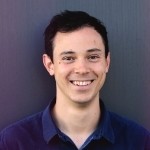 Alex Ganose, PhD
Alex Ganose, PhD
Lecturer, Department of Chemistry
Imperial College London
London, UK
Alex Ganose is a Lecturer in the Department of Chemistry at Imperial College London. His work is focused on using computational materials chemistry, machine learning, and high-throughput calculations to design new materials for energy applications. He is a co-investigator for the Materials Project, an open database of computational materials properties, and he leads the development of several open-source software packages for high-throughput materials science calculations.
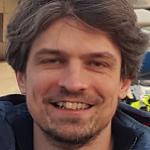 Geoffroy Hautier, PhD
Geoffroy Hautier, PhD
Hodgson Family Associate Professor of Engineering
Thayer School of Engineering
Dartmouth College
Hanover, NH, USA
Prof. Hautier's research focuses on computational materials discovery and design. His group has been using and developing ab initio high-throughput and big data approaches for various fields, including functional materials (e.g., transparent conducting or solar materials) and Li-ion batteries. He received his PhD in Materials Science and Engineering from the Massachusetts Institute of Technology in 2011 followed by a postodoctoral position as a FNRS and Marie Curie postdoctoral fellow. After holding a faculty position at the Université Catholique de Louvain in Belgium, he moved to Dartmouth in 2020 as the Hodgson family Associate Professor of Engineering. He is one of the early developers and co-principle investigators of the Materials Project, a freely accessible high-throughput computational database.
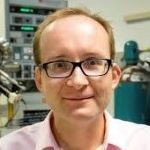
Sergei V. Kalinin, PhD
Director, Institute for Functional Imaging of Materials
Oak Ridge National Laboratory
TN, USA
In addition to his role at Oak Ridge National Library, Dr Kalinin is a Theme leader for Electronic and Ionic Functionality on the Nanoscale. He holds a joint faculty position at the Bredesen Center at the University of Tennessee-Knoxville and adjunct faculty position at Pennsylvania State University. His areas of research have involved application of big data, deep data and smart data for materials science, as well as coupling between electromechanical, electrical and transport phenomena on the nanoscale.

Sinan Keten, PhD
Associate Prof. of Mechanical Engineering & Civil and Environmental Engineering
Northwestern University
IL, USA
Prof. Keten's research expertise is on computational materials science and mechanics, focusing on polymer nanocomposites and biomolecular materials. He is the recipient of numerous awards and honors including the US Presidential Early Career Award for Scientists and Engineers, Office of Naval Research Young Investigator Program and Director of Research Early Career Awards. Professor Keten is a Fellow of the American Physical Society and has received recognitions from the American Society of Mechanical Engineers and the Materials Research Society.
 Alpha A. Lee, PhD
Alpha A. Lee, PhD
Group Leader and Royal Society URF, Department of Physics
University of Cambridge
Cambridge, United Kingdom
Dr Lee's expertise is in data-driven materials science and chemistry. He work focuses on using machine learning to accelerate the discovery of functional materials and molecules, as well as controlling materials degradation. His group conducts research at the interface between machine learning, computational physics, soft matter and molecular chemistry. Dr Lee obtained his DPhil from the University of Oxford, and was a Fulbright Scholar at Harvard University before joining the University of Cambridge. He also cofounded a biotech company, PostEra, which advances molecule design and synthesis with machine learning.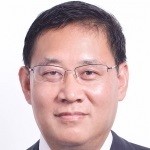 Jianjun Liu, PhD
Jianjun Liu, PhD
Professor
Shanghai Institute of Ceramics, CAS
Shanghai, China
Prof. Liu’s research interesting focuses on atom-level material design by various computational methods including classical, quantum, and machine-learning techniques. His research group has made significant effort in developing and utilizing computational electrochemical methods and machine-learning models to gain insights into physical mechanisms and control material structures, particularly for electrochemical materials such as electrocatalysis and batteries. He earned his Ph. D. degree in physical chemistry from Jilin University, followed by enriching postdoctoral experiences at Emory University and Southern Illinois University. In 2011, he joined Shanghai Institute of Ceramics, Chinese Academy of Sciences (SICCAS).
 Samir Lounis, PhD
Samir Lounis, PhD
Prof., Peter Grünberg Institut, Institute for Advanced Simulation
Forschungszetrum Jülich GmbH
Jülich, Germany
Prof. Samir Lounis is expert in the theoretical description of static and dynamical spintronics phenomena at the nanoscale. He is head of FUNSILAB, where strong efforts are made in developing various theoretical concepts and methods based on multiple-scattering theory density functional theory (DFT), time-dependent DFT (TD-DFT) and many-body perturbation theory (MBPT). Of particular interest are electronic, magnetic and transport properties with a particular focus on dynamical/excitation effects.
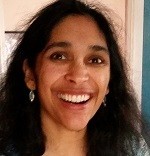 Neepa Maitra, PhD
Neepa Maitra, PhD
Department of Physics
Rutgers University
NJ, USA
Prof. Matira completed her PhD at Harvard University where her thesis was on semiclassical methods. She completed her postdoc at UC Berkeley before entering the field of density functional theory with a postdoc. Previously she was part of the Hunter College CUNY faculty before joining Rutgers-Newark. At Rutgers, her group conducts research in theoretical chemical physics; in particular, time-dependent density functional theory, the exact factorization approach to correlated quantum subsystems, coupled electron-ion dynamics, and polaritonic chemistry.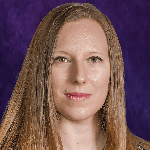 Noa Marom, PhD
Noa Marom, PhD
Associate Professor of Materials Science and Engineering
Carnegie Mellon University
PA, USA
Noa Marom combines first principles simulations within density functional theory (DFT) and many-body perturbation theory with machine learning and optimization algorithms to predict the structure and properties of materials. This includes molecular crystals and interfaces between inorganic, organic, and organic-inorganic materials for various energy and technology applications.
 Dane Morgan, PhD
Dane Morgan, PhD
Prof. of Engineering
University of Wisconsin-Madison
WI, USA
Prof. Morgan’s work combines thermostatistics, kinetics, and informatics analysis with atomic scale calculations to understand and predict materials properties. His application interests include electrochemical systems, nuclear materials, and electron emission devices. He is the Harvey D. Spangler Professor of Engineering at the University of Wisconsin where he has been a professor since 2004. He has received multiple teaching and research awards and is founder of the Informatics Skunkworks, and undergraduate group dedicated to realizing the potentials of informatics for science and engineering.
 Jörg Neugebauer, PhD
Jörg Neugebauer, PhD
Director, Computational Materials Design Department
Max-Planck-Institut für Eisenforschung GmbH
Düsseldorf, Germany
Prof. Neugebauer's research focuses on developing ab initio simulation techniques and applying them to a broad range of materials science questions. His department uses simulation techniques spanning electronic structure, atomistic and mesoscopic approaches. He has worked on a range of topics, notably including optoelectronics, surface science, catalysis, crystal growth, metallurgy and molecular biology. A goal of his more recent work involves extending density functional theory calculations that have been originally developed for zero Kelvin towards a full inclusion of finite temperature effects.
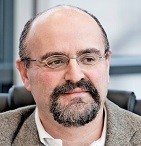 Prof. Stefano Sanvito
Prof. Stefano Sanvito
Chair, Condensed Matter Theory, Director, CRANN
Trinity College
Dublin, Ireland
As the Director of CRANN (Center for Research on Adaptive Nanostructures and Nanodevices), Prof. Sanvito's main research interests are in first principles theory of materials and devices, in particular applied to magnetism and spintronics. These include both algorithms design and materials science. He is also interested in large materials screening using combination of high-throughput electronic structure theory and machine-learning methods.
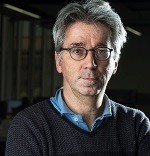 Berend Smit, PhD
Berend Smit, PhD
Professor, Department of Chemistry and Chemical Engineering
Ecole Polytechnique Fédérale de Lausanne (EPFL)
Lausanne, Switzerland
Berend Smit’s research focuses on the application and development of novel molecular simulation techniques, with emphasis on energy related applications. Together with Daan Frenkel he wrote the textbook Understanding Molecular Simulations and together with Jeff Reimer, Curt Oldenburg, and Ian Bourg the textbook Introduction to Carbon Capture and Sequestration.
 Julie B. Staunton, PhD
Julie B. Staunton, PhD
Prof., Director EPSRC Centre for Doctoral Training in Modelling of Heterogeneous Systems
University of Warwick
Coventry, UK
Prof. Julie Staunton's research interests are in ab initio magnetic materials modelling and she and collaborators developed the DFT-based `Disordered Local Moment' (DLM) theory of finite temperature magnetism. Her current projects transition metal permanent magnets and caloric effects in magnetic materials. Since 2001 she has been a professor in the Theoretical Physics Group at the University of Warwick and is currently the Director of the EPSRC Centre for Doctoral Training in Modelling of Heterogeneous Systems (HetSys) which trains people in computational modelling across a range of research themes such as nanoscale devices, catalysts, superalloys, smart fluids and laser-plasma interactions.
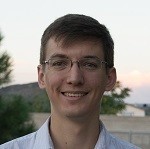 Logan Ward, PhD
Logan Ward, PhD
Assistant Computational Scientist, Data Science and Learning Division
Argonne National Laboratory
Chicago, IL, USA
Logan Ward is a computational materials scientist in the Data Science and Learning Division at Argonne National Laboratory. His expertise is the the design of machine learning algorithms for materials engineering, and combining artificial intelligence with automated experiment and high-performance computing. Logan is particularly interested in inorganic functional materials and molecular materials for battery applications.
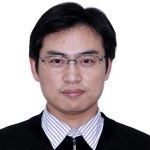
Hongming Weng, PhD
Key Laboratory of Condensed Matter Theory and Computation
Institute of Physics, Chinese Academy of Sciences
Beijing, China
Prof. Weng received his BS degree and PhD degrees in Physics from Nanjing University. His work is generally focused on computational condensed matter physics; by first-principles calculations he studies the magnetic, optical and topological properties of materials. Previously he was a Postdoc (2005–2007) at the Institute for Materials Research, Tohoku University, and an Assistant Professor (2007–2010) at Japan Advanced Institute of Science and Technology. He then joined the Institute of Physics, Chinese Academy of Sciences, as an Associate Professor in 2010 and became full Professor in 2016.
Editorial Board Members
Igor Abrikosov, Linkoping University, Sweden
Jim Belak, Lawrence Livermore National Laboratory, USA
Gerdbrand Ceder, UC Berkeley, USA
Ying-Hao Chu, National Chiao Tung University, Taiwan, China
Stefano Curtarolo, Duke University, USA
Ismaila Dabo, Pennsylvania State University, USA
Shaoming Dong, Shanghai Institute of Ceramics, CAS, China
Wenhui Duan, Tsinghua University, China
Giulia Galli, University of Chicago, USA
Rafael Gómez-Bombarelli, MIT, USA
Steve Granick, IBS Center for Soft and Living Matter and UNIST, South Korea
Robin Grimes, Imperial College London, United Kingdom
Yousung Jung, KAIST, South Korea
Marisol Koslowski, Purdue University, USA
Jiangyu Li, University of Washington, USA
Jian Lu, City University of Hong Kong, China
Yanmin Ma, Jilin University, China
David L. McDowell, Georgia Institute of Technology, USA
Bryce Meredig, Citrine Informatics, USA
Yifei Mo, University of Maryland, USA
Tetsuo Mohri, Tohoku University, Japan
Cewen Nan, Tsinghua University, China
Tamio Oguchi, Osaka University, Japan
Monica Olvera de la Cruz, Northwestern University, USA
Shyue Ping Ong, University of California San Diego, USA
Xiaoqing Pan, The Henry Samueli School of Engineering University of California, Irvine, USA
Jim Pfaendtner, University of Washington, USA
Thomas Proffen, Oak Ridge National Laboratory, USA
Yue Qi, Brown University, USA
Dierk Raabe, Max-Planck-Institut für Eisenforschung GmbH, Germany
Rampi Ramprasad, Georgia Institute of Technology, USA
James Rondinelli, Northwestern University, USA
Darrell Schlom, Cornell University, USA
James Sethian, UC Berkeley, USA
Ingo Steinbach, Ruhr-Universität Bochum, Germany
Alejandro H. Strachan, Purdue University, USA
Jing Sun, Shanghai Institute of Ceramics, CAS, China
Ichiro Takeuchi, University of Maryland, USA
Isao Tanaka, Kyoto University, Japan
Katsuyo Thornton, University of Michigan, USA
Koji Tsuda, University of Tokyo, Japan
Priya Vashishta, University of Southern California, USA
Aron Walsh, Imperial College London, UK
Yunzhi Wang, Ohio State, USA
Francois Willaime, CEA-Saclay, France
Chris Wolverton, Northwestern University, USA
Yang Xiang, Hong Kong University of Science and Technology, Hong Kong, China
Sulin Zhang, Pennsylvania State University, USA
Wenqing Zhang, Shanghai University, China
Maxim Ziatdinov, Oak Ridge National Laboratory, USA
Interested in joining the journal team?
If you are interested in joining the journal as an Editorial Board Member or Associate Editor, please complete this Google form. Associate Editors are part of the editorial team that handle manuscripts, while Editorial Board Members are regular reviewers and are consulted for ad hoc advice. We will contact you if your expertise meets the needs of the journal.
Nature Portfolio journals are committed to promoting practices that support diversity, equity and inclusion in science communication and publishing, and we strongly encourage gender, race, ethnic, geographic, career stage and other diversity in our journal teams. Our in-house staff will use your information only for the purposes of identifying new editorial team or board members. Please contact the journal by email if you would like to remove your information from these records.
Please note that we are not able to respond to all applicants.
